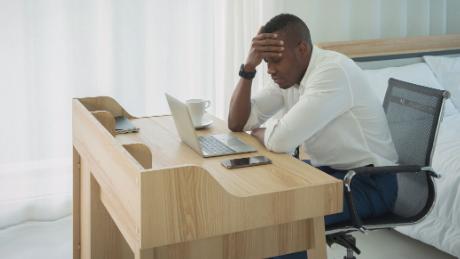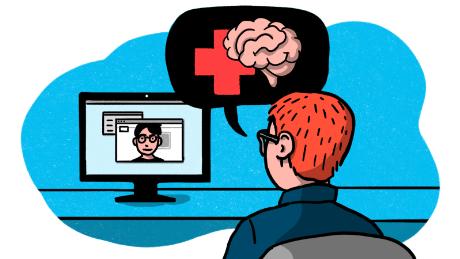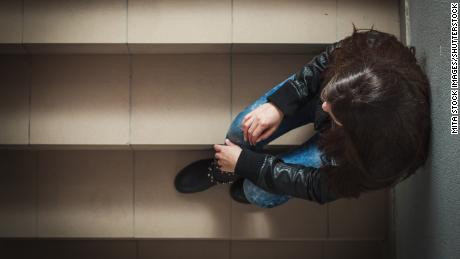Seasonal affective disorder could hit particularly hard this year, especially after months of social distancing and limited contact with family or large groups.
“Our emotional winter is coming,” said Jaime Blandino, a clinical psychologist and cofounder of Thrive Center for Psychological Health in Decatur, Georgia.
form of depression that some people get for a few months each year, most commonly during the late fall and winter months, as the days shorten. It can linger until the following spring or summer. Although less common, SAD can also appear in the summer months and go away as the season changes.
“I think we can expect a surge in seasonal affective disorder this year,” Blandino said. “It’s the pandemic, the election and just the cumulative effect of the year.”
Seasonal affective disorder
American Psychological Association.
“Seasonal affective disorder could be worse this year given how much we’ve relied on the outside as this sort of respite,” said Vaile Wright, the APA’s senior director of health care innovation.
according to the National Institute of Mental Health. The condition is more common in women than in men, and affects about 5% of the US population.
It occurs more frequently the farther people live from the equator, including for instance, Alaska, which has darker winters. This disorder is also more common among women and young adults, as well as those with a personal or family history of depression.
“There’s also a clinically anecdotal risk factor which is just ‘how have you been doing?'” Blandino said, noting that the pandemic has affected the emotional state of many who haven’t usually needed to worry about their mental health. “Some people didn’t have depression until now.”
During the pandemic, people are already carrying a greater emotional load than usual. Although one of the best ways to prevent Covid-19 remains avoiding gatherings, following public health advice comes at a cost to mental health.
“Some of the measures we’ve had to take to protect ourselves against the coronavirus aren’t good for us,” she said. “Our modes of resilience may not be applicable anymore.”
The new normal means a decline in in-person interaction. Further, many people feel screen fatigue from using video chat technology to keep in touch with friends and families. These factors can drive a palpable sense of loneliness that leaves many vulnerable to SAD this year.
“Of course, you’re anxious,” Blandino said. “It would be abnormal for you not to be struggling.”
How to cope
We’re a few weeks into fall in the Northern Hemisphere. Before the mercury truly plunges, now is the time to build a plan that can see you through the dark winter months. Think of it as squirreling away your own mental health acorns from which you can benefit later.
“It’s easy to get creative when you’re not already in that depressed place,” Blandino said.
Build a tool kit: As you brainstorm an approach to staving off SAD, one way to think ahead is to create an idea bank of your favorite ways to do self-care, be it long morning walks or late-night bubble baths. Physically writing them out is a way of getting away from ever-pervasive screens.
“It can be a literal box,” Blandino said. “As you think of ideas, write them on a slip of paper and throw them in the box.”
Wellness piggy bank: Spend some time journaling now, and reflect on the small pleasures around you. This is a mindfulness practice of really leaning into the sensory aspects of our experience, such as capturing in our mind’s eye the beauty of a flower blooming in the backyard, or the aroma of an autumnal-scented candle wafting in the air, Blandino said.
Or it could be listening to the nostalgic sounds of a favorite band’s music, which allow us to emotionally reenter a previous era of our lives when things seemed less uncertain. Keep track of these moments, and if things feel bleak this winter, reread your list or add to it with more little joys you see.
Seeking light: As you navigate winter, there are small tweaks to your day that can help you get the extra light you need.
“That could be taking your coffee by the window in the morning,” Wright said. Put your desk next to a window. Or that could be something simple such as not wearing your sunglasses when outside to fully soak in the sun’s healing rays.
Happy lights: One of the primary treatments for seasonal affective disorder is bright light therapy, which has been described as clinically affective since the 1980s. You can find one that works for you and your budget by searching online for light therapy lamps, which work by emitting full-spectrum light similar to sunlight.
2009 study by researchers from the University of Maryland.
Spend a weekend cooking: When you’re up for it, consider cooking a big helping of cozy, hearty soups, packed with nutrition. “Give yourself something to eat for times when you don’t feel like doing anything,” Blandino said.
Find something to look forward to: With fewer special events, conferences and vacations, every day starts to feel like Blursday. That’s why it’s particularly important to try and still plan something special for Halloween, Thanksgiving and the winter holidays, even if a gathering needs to be small, outdoors or physically distant.
This year that could mean setting up a special space outdoors with a space heater or twinkle lights and inviting over just a few close friends. “Having things to look forward to is important for regulating your mood,” Blandino said.
systematic review study.
APA data. That number has risen to 75% after governors issued emergency orders expanding access to telehealth services.
The APA is pushing to help make those changes permanent, she added.







